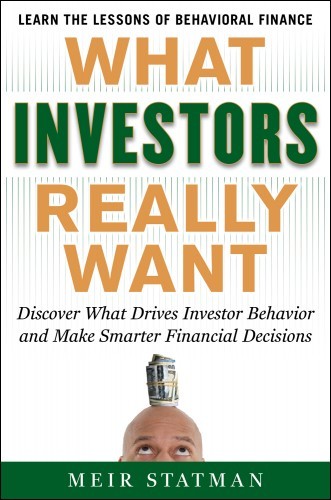Joining an Investment Club
Post on: 24 Июль, 2015 No Comment

Investment clubs can be fun, educational, and profitable — should you join one?
Investment clubs are groups that meet regularly to learn about investing, analyze investment options, and, in many cases, buy and sell investments as a unit. Though members certainly welcome profits, the real focus of most investing clubs is education — and often a fair bit of socializing.
Particularly for novices, the club environment can provide the support and structure they need to get started in investing. It encourages them to save money, in order to make their expected contribution to the joint investment pot. And clubs can make the stock market accessible for those who can’t afford to make a large initial investment.
Thousands of investment clubs exist across the country, with billions of dollars in their collective portfolios. How do you decide whether or not to join one of these groups, start your own club, or go it alone?
How Investment Clubs Operate
Before you can decide if joining or starting an investment club is right for you, you have to know something about how they operate.
The typical investment club has approximately ten members. A group of that size is big enough to spread the club duties around so the time commitment is manageable, yet small enough to allow all members to actively participate.
Clubs can meet as often as they like, but once a month is typical. Meetings usually last a couple of hours. A typical agenda includes a treasurer’s report, a performance review of current holdings, the presentation of one or more new investment opportunities that meet the club’s predetermined criteria, a buy-sell vote, and sometimes an educational component, such as a book report. There’s usually a little time for chatting and enjoying one another’s company, too.
Some clubs buy and sell investments as a group. In others, members invest independently.
Investment Clubs That Buy and Sell Together
Traditional investment clubs buy and sell investments — stocks, mutual funds, real estate investment trusts, and so on — as a group. Members of clubs that invest in a single portfolio often form a legal partnership or a limited liability company (LLC) or partnership (LLP). (To learn more about LLCs, see Nolo’s Limited Liability Company area. To learn more about LLPs, read Nolo’s article Limited Partnerships and Limited Liability Partnerships .) Any tax liability that is generated by club activities is passed through to the club’s individual members.
Clubs that invest together set an amount for members to contribute to the investment pool each month — ordinarily less than $100 per month, though the required amount varies from group to group. (The infamous Beardstown Ladies — a group of older women who were touted as having beaten the stock market until someone realized that the numbers had been calculated wrong — required an initial $100 contribution and then $25 per month thereafter.)
In addition, each member may be required to pay a nominal fee for club and individual dues.
Each club sets its own guidelines for when to buy and sell. That could mean relying on a stock’s P/E (price-to-earnings) ratio or recommendations from outside experts, or employing some other approach.
Self-Directed Investment Clubs
Self-directed investment clubs meet regularly to do many of the same things traditional clubs do — learn about investing, discuss specific investment opportunities, and develop a network with similar interests and goals. But the members of these groups do not contribute to a single portfolio; each member invests independently.
Are You a Candidate for Investment Club Membership?
You may find great benefits in joining an investment club if:
- you’re interested in investing but just can’t seem to get started, or can’t stay on track
- you want to invest in the market but you don’t have enough money to build a diverse portfolio of individual stocks on your own
- you have enough free time to be actively involved (enough time to read publications, research investment options, and attend meetings, which could require five hours or more per month; or if you’re a club officer, significantly more time), and
- you enjoy the idea of investing in a social setting, and you would not have a problem seeing your money put into an investment you voted against.
If you are not able to make a long-term commitment or you don’t have the time to make a meaningful contribution to the group’s activities, then membership in an investment club isn’t right for you.

Finding and Choosing an Investment Club
Before you can join a club, you need to find one that is accepting new members. This can be a bigger challenge than you might expect. One reason is that SEC (Securities & Exchange Commission) rules effectively prohibit clubs from publicly soliciting for new members, making them difficult to learn about.
Also, most investment clubs are close-knit groups, made up of people with a common connection — coworkers, members of the same church, old college friends, or neighbors, for example. Many clubs are not open to new members who do not share the same connection.
Despite these challenges, there are ways to improve your chances of finding a club to join.
Visit a model club meeting. Check the BetterInvesting website, at www.betterinvesting.org. to learn about model clubs that meet regularly across the country. The meetings, which are sponsored by local BetterInvesting chapters, are open to the public, allowing prospective members to experience a typical club meeting. You may be able to get information about local clubs while you’re there. Or, you might meet others who would be interested in starting a club with you. While at the BetterInvesting site, you also can click the Local Chapters tab to get contact and event information.
Post a message. ICLUBcentral, at www.iclub.com. provides information and tools for investors and investment clubs. The organization also invites newcomers looking for a club to post a message in their online Clubhouse Forum. You could try the same on other message boards, such as the one at StockCentral, at www.stockcentral.com .
Search the Web. Do an online search for investment clubs in or near [your town or city]. Or check online directories, like the one offered by Yahoo. Many investment clubs have their own website.
Before you begin your hunt for a club, answer these questions:
- Do I want to meet in person or online? (Some clubs communicate strictly via computer.)
- Do I want to contribute money and invest as a group, or invest on my own?
- What types of investments do I want to learn about and buy? (Many groups focus on a particular type of investment — stocks, mutual funds, bonds, or real estate, for example.)
- Do I have any restrictions regarding the kinds of companies I’m willing to invest in? For example, if you would have a problem investing in a company whose practices were not socially responsible or eco-friendly, you should not join a club that doesn’t share your philosophy. (To learn more about choosing investments that support your values, read Nolo’s article Green Investing .)
Don’t join any club until you have attended at least a couple of meetings and are sure you are compatible. If one club isn’t a fit, keep looking.
Starting an Investment Club
If you can’t find a club to join, you can always form your own — you only need a handful of dedicated members to make it work. But don’t underestimate the amount of time and effort it takes to launch a new club. Before you can make your first investment, you’ll need to take care of things like writing the by-laws and mission statement, creating a legal partnership or LLC, and setting up the accounting software.
If you’re willing to make the commitment, here are some resources to help you get your club off the ground:
- www.BetterInvesting.org. Click the Clubs tab, then click Starting a Club. From here you can download information or watch a video about starting your own club.
- www.bivio.com. This website walks you through the steps of starting a new club, and provides samples, forms, and tools.
- www.iClub.com. At this site led by Doug Gerlach, author of Investment Clubs for Dummies, you can access articles, a newsletter, a forum, tools, and support.
If you do the research and make a good choice, starting your own investment club or joining an existing club can provide you with both challenges and personal rewards.
Related Information
For easy-to-read, practical advice on planning your family’s finances, including getting started with investing, read The Busy Family’s Guide to Money . by Sandra Block, Kathy Chu, and John Waggoner (Nolo).














